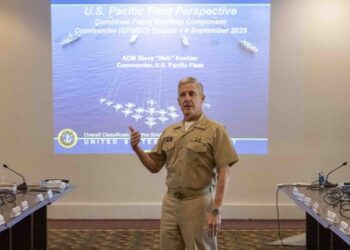Quantum devices designed to measure Earth’s magnetic fields have the potential to serve as a replacement for GPS, but researchers face the challenge of determining the operational efficacy of these devices. A recent contract with the Pentagon indicates that SandboxAQ is addressing this critical issue.
On Tuesday, SandboxAQ announced an agreement with the Defense Innovation Unit (DIU) to participate in the Transition of Quantum Sensing (TQS) program. This initiative will enable the U.S. military to test SandboxAQ’s AQNav software aboard various aircraft under differing conditions. The announcement follows a previous collaboration with the U.S. Air Force, where AQNav was tested on C-17 Globemaster III aircraft during military exercises in May and July of 2023.
Luca Ferrara, the general manager of AQNav at SandboxAQ, indicated that the new agreement, along with recent research advancements, is paving the way for rapid developments in magnetic navigation. However, he cautioned that it would still take years before small, cost-effective, self-piloting drones could accurately identify their targets. Nonetheless, the DIU contract reflects a growing confidence that researchers are now asking the right questions in the field of magnetic navigation.
While magnetic sensing technology is not new—compasses utilize the Earth’s crust’s magnetic fields—this method does not provide the accuracy required for precise navigation. Advanced quantum sensors can detect magnetic fields with greater accuracy than traditional compasses, but the variability of these magnetic fields across the Earth complicates reliability. Their effectiveness is location-dependent, and existing magnetic field maps are limited, which restricts testing of magnetic sensors.
Ferrara elaborated that well-constructed maps typically require specially equipped planes to achieve accuracy within tens of meters. The challenge remains on how to utilize magnetic navigation effectively when GPS is compromised, and research is ongoing to understand its performance under a broader range of conditions.
The certification processes for navigation performance, such as Required Navigation Performance or Circular Error Probable metrics used by the military, can be misleading for magnetic navigation. To address this, SandboxAQ is employing artificial intelligence to bridge existing gaps.
A forthcoming paper by Prasenjit Sengupta, chief navigation engineer at SandboxAQ, is set to be published in the December 2025 edition of the scientific journal Navigation. The paper introduces a new methodology for assessing error rates within defined limits, similar to how a weather report indicates visibility conditions.
Ferrara noted that while magnetic navigation will not perfectly replace GPS, understanding the circumstances that enhance or limit its performance is vital. Recognizing these conditions, as well as working around them, could provide essential insights for developing backup positioning systems to complement GPS.
He emphasized the importance of ensuring that the sensors can deliver reliable measurements so that the system can correctly ascertain its location whenever necessary. Even alternatives to GPS must acknowledge their inherent limitations.













